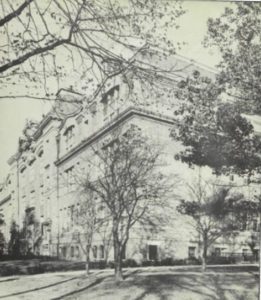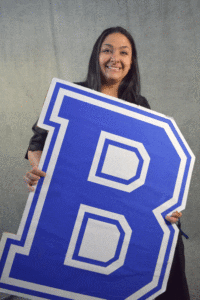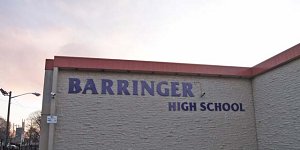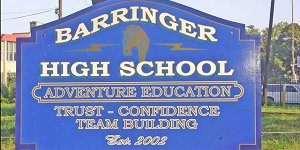1838
The year, 1838, Nathan Hedges opened the doors to a drafty, old building so that a motley group of boys would receive an education beyond primary school. By conducting the first high school program in the state, and the third to be established in the United States, Mr. Hedges unwittingly became a part of New Jersey history. Originally labeled Newark High, the school’s name was later changed to Barringer High School.
In 1838, the city of Newark was a small town of 16,000 inhabitants. Horses and buggies were the chief method of transportation. Candles were the source of evening light. Farms and large gardens were the central means of containing food staples. Business activities were conducted on a short, unpaved street in the center of the town. Far out on the edge of town there existed a swamp later to become Branch Brook Park. Nearby was an old quarry called “Goat Hill”, a grazing area for goats. Eventually this hill became the site of Barringer High School.
1852
The original high school house was actually the first story of a building on Bank Street. Then in 1852, the Board of Education authorized the acquisition of a lot (90 feet front) on the corner of Washington and Linden Streets. On January 7, 1853, although still incomplete, this new building was opened. The building was three stories high, and had a student population of 498 boys and girls. The second floor was used exclusively by the girls, and the third floor only by the boys. The boys and girls were separated into two distinct departments; they were not allowed to mingle at any time.
1875
In 1875, Dr. William N. Barringer was hired to succeed Mr. George B. Sears as Superintendent of Schools. Dr. Barringer, originally from Troy, NY, assumed his new position with great enthusiasm. The effort, courage, and faith he imparted to the Newark school system exerted great influence on the youth of this city.
The Board of Education eventually realized that a new high school was necessary. Dr. Barringer saw his dream fulfilled when construction plans for this new high school were officially adopted. The tract of land for this second building, which today is the faculty parking lot, was far from the center of the city. Many citizens objected to the location, protesting that the city would never enlarge to those extremes and particularly not in that direction.
1898
The class of 1898 was the last to graduate from the Washington and Linden Street building. Construction of the new school which cost $300,000.00 began in 1878 and was completed in 1899. It was regarded among the finest architectural products of the city. At the time stone markers outlined the ground plan for Sacred Heart Cathedral. Also, work had begun on the swamp to transform it gradually into a park. Thus, the new high school was set on a veritable “acropolis of beauty”.
1907
In 1907, the Name of Newark High was officially changed to Barringer High, in honor of Dr. Barringer. July 1907 was the year the first class graduated from Barringer High School.
When America entered World War I, there were few boys in Barringer old enough to be drafted. Nevertheless many of the boys left school before graduation and enlisted in the Armed Services. In 1941, war again intruded on student life. During World War II Barringer students participated in various community activities. The physical education classes practiced commando training to prepare for selected service.
1960s & 1970s
The 1960’s and into the 1970’s were years of constant turmoil in our culture, and to the existing educational system. From the shocking murder of important figures, to the battles in the Vietnam War, the country survived a decade of disturbances. It was an era of upheaval and change, and Barringer was a visible participant. The current Barringer building opened to a large student body in 1964.
1988
In 1988, Barringer celebrated its 150th anniversary with a birthday party involving over 2000 alumni and supporters. It was a unique milestone in New Jersey’s history.
Today, with students of several ethnic backgrounds, Barringer High School is unique in the diversity of its population. This allows an infusion of contrasting cultures, values, and beliefs all blending together into a multicolored fabric. We can be proud of the many rich and lustrous traditions associated with our school.







